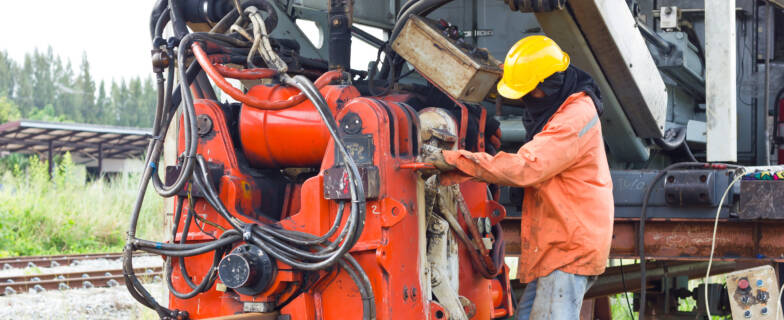Eight Safety Features Required Under the Railroad Safety Appliance Act
This 121-year-old act is keeping railroad workers safe. Do you know the eight safety features that all cars and locomotives must include under the RSAA?
In 1893, Congress enacted the Railroad Safety Appliance Act (“SAA”) to provide a set of federal safety standards for trains used on railroad lines across the United States. At the time, railroad workers had one of the most dangerous jobs in the nation, and the SAA was designed to decrease rising workplace injuries and deaths on American railroads by requiring that each locomotive and/or railcar be equipped with certain basic safety features, including automatic couplers and air brakes.

The SAA took effect in 1900 and has been credited with a sharp drop in injuries in the early 20th century. According to the article, “Lives and Limbs Saved by Automatic Couplers,” published in 1910, the Railway Age Gazette found that between 1893 and 1908, deaths decreased by about one-third even as the number of trainmen increased significantly during that same time.
The SAA’s original safety requirements remain in effect today with some modifications over the years. The current version requires the following eight safety features for all cars and locomotives placed in service on railroad lines:
- automatic train couplers that can be coupled by impact and uncoupled without a worker stepping in between the ends of cars;
- secure sill steps;
- efficient hand brakes;
- ladders and running boards must be secure and handholds or grab irons must be available on the roof at the top of each ladder;
- except as otherwise provided, secure handholds and grab irons at the ends and sides of cars;
- drawbars that meet height requirements as prescribed by the Secretary of Transportation;
- enough power brakes or train brakes for the engineer to control the train’s speed without using common hand brakes for that purpose;
- at least 50 percent of all vehicles (cars and locomotives) in a train must be equipped with power brakes.
Although these safety laws have successfully reduced injury events, they still happen when a railroad fails to provide adequate train equipment. For example, if a pin lifter does not work properly and a trainman needs to go between two railcars to open a knuckle, the condition of the railcar violates the SAA. If a handhold breaks while climbing on or around a railcar or locomotive, the SAA is violated. Such a violation of an absolute duty and creates strict liability negligence on the part of the railroad. In such cases, the railroad’s reasonable care to prevent the failure is not a defense. Importantly, the railroad’s liability can not be reduced even if the worker was contributorily negligent if the injury happened while the equipment was being used. That liability does not apply if the equipment is being inspected or repair at a maintenance shop.
If you are injured after using defective equipment, it is critical to contact an experienced railroad attorney who can help evaluate whether you have a compensation claim under the SAA or one of the other railroad safety laws designed to protect railroad employees from dangerous conditions.
Article by Nelson Wolff, Senior Partner
In our Railroad Injury e-newsletter exclusively covering railroad-related topics, attorneys from Schlichter Bogard & Denton’s nationally recognized team discuss, among other things, railroad workers’ rights, federal railroad laws, recent rulings impacting railroad workers, and firm news. Click here to subscribe.
The information contained in this newsletter is provided for informational purposes only and does not constitute legal advice. Reading this newsletter and information contained herein does not constitute formation of an attorney-client relationship. Every potential case must be assessed in accordance with its unique facts and circumstances. If you believe you may have a legal claim, please request a free, confidential case evaluation with our team today.
